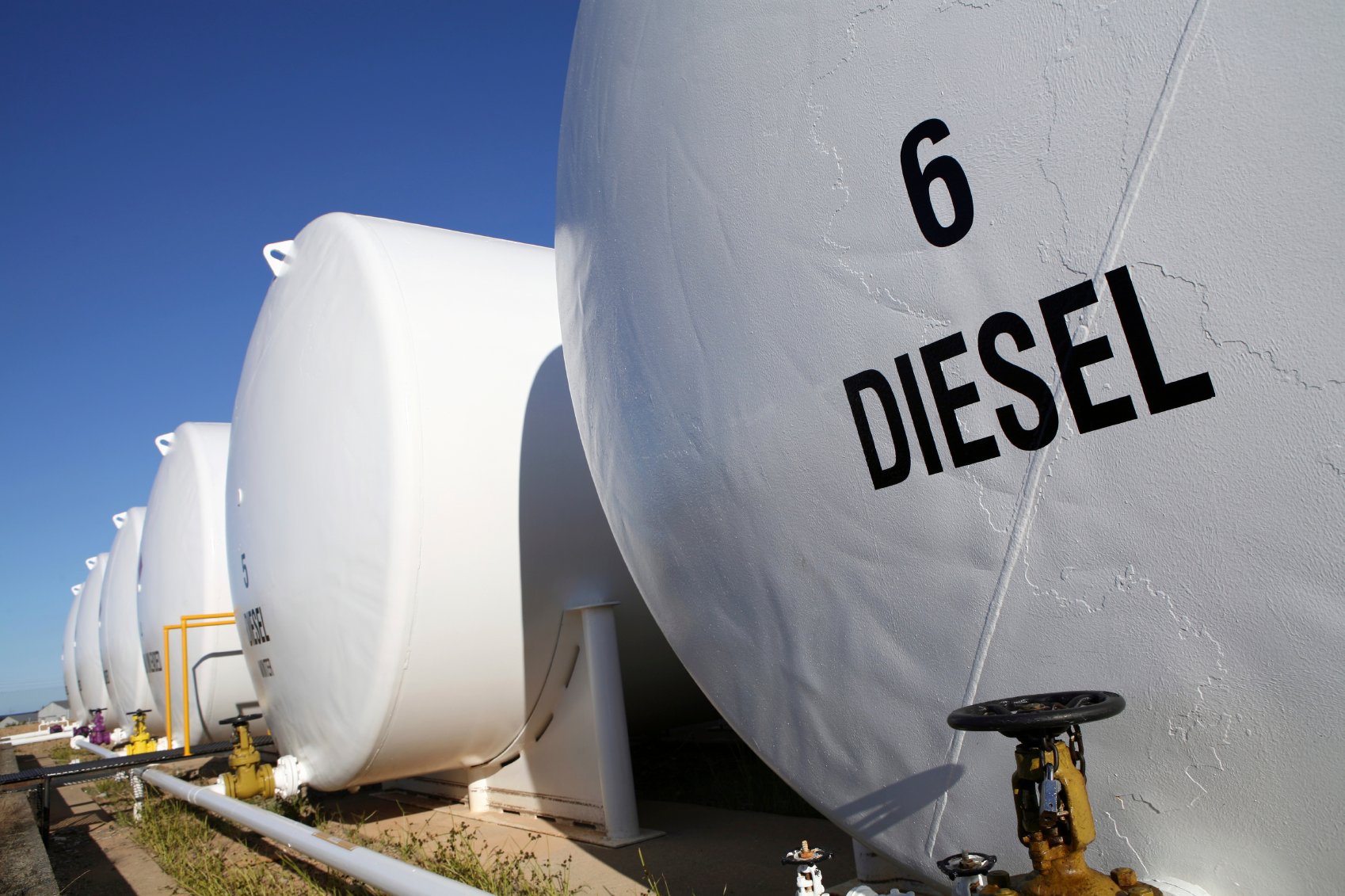Guidelines For Long Term Fuel Storage of Diesel and Storage Tanks
Back when fuel prices went sky high with no sign of coming down long term, fleets and fuel-using entities (like city governments) were forced to...
4 min read
Erik Bjornstad : Nov 29 2016

There are over 100,000 diesel fuel storage tanks across the United States, all of them holding diesel fuel that could be many years old. Over the last decade or two, fuels have changed dramatically. And it hasn't been completely clear how these changes would impact people who stored fuel. So in July 2016, the Environmental Protection Agency (EPA) released a 62-page report detailing the results of a study they undertook on the serious issue of fuel storage tank corrosion.
The findings of the study should raise red flags for everyone who stores or uses diesel fuel or owns/operates a fuel storage tank.
To understand why the EPA took action, we have to look at three historical markers in recent history. In 2007, the first known reports of corrosion in underground storage tanks, also known as USTs, began to filter out into the industry. Specifically, it was “vapor space” corrosion – corrosion damage that wasn’t in the bottom of the tank where the fuel is, but which was actually above the fuel line. How can an area that isn’t in contact with fuel or water become corroded? That’s what people started to ask, especially since it had never been a problem before.
In 2010, the Petroleum Equipment Institute (PEI) conducted an industry survey that enabled it to see what kind of storage tank parts were more likely to be sustaining corrosion damage. And the final marker in 2012 came when the Clean Diesel Fuel Alliance did a field study of six storage tank systems. They found vapor space corrosion damage in all of them. They determined that this corrosion was being caused by organic acids produced by microbes in the fuel that were feeding on, among other things, trace ethanol contamination in the diesel fuel. Those acids actually turn into vapor that rises above the fuel line and attacks metal parts in the space above. So now the EPA steps in and decides a more extensive study is needed.
In Jan-Feb 2015, the EPA studied 42 underground storage tank systems from across the country - the most extensive study of this kind that had ever been undertaken. Some were metal tanks, while others were fiberglass tanks. The sizes of the tanks ranged from 5,000 gallons to 20,000 gallons – typical sizes for most industries that store fuel for use. They gathered information on the histories of the tanks (like whether they had ever had corrosion damage before and how often they get serviced), and they used special cameras to look inside the tanks and document how much corrosion was present and where it was. They even took samples of the fuel, the tank water bottoms, and vapor samples of the air inside the tank. Those were all tested in third-party labs to see what they contained.
What did the EPA find? There were five big findings they were able to announce.
35 of the 42 tanks (83%) showed either “moderate” corrosion or “severe” corrosion.
Less than 25% of tank owners reported existing corrosion in the tanks before inspection. Yet 83% of the tanks had damage. That shows that many tank owners didn’t know that was going on in their tanks.
Offhand, you wouldn’t guess that was true. But it was all the metal components – the bungs, the pump shafts – that showed signs of corrosion in fiberglass tanks.
This is a completely different situation than what was seen before 2007, when this kind of corrosion was virtually unknown.
This is revealing, and it’s also troubling. The fuel property tests also showed that there was the strongest correlation between fuel having too much water and too much sediment content, and the associated tank having the highest amount of corrosion present.
Although the EPA clearly advised that their study technically wasn’t a true statistical sample of the nation’s tanks, they did conclude that the facts they saw should lead one to conclude that there are a whole bunch of USTs across the country storing fuel that isn’t as clean and dry as it should be.
For tank owners, indeed for consumers in general, why does any of this matter? So what if the EPA found that most tanks already have corrosion going on inside? The EPA undertook this study because it knew that this issue has the potential to seriously impact both human health and the environment. And the EPA found corrosion damage on metal parts that are essential to spill prevention systems in these storage tanks. If/when these parts get damaged, it increases the chance of the tank developing a leak and spilling diesel fuel into the environment. And this puts the tank owners in a seriously precarious position when it comes to potential liability and expense.
The EPA concluded its report with some specific recommendations for tank owners and operators.
Recommendation #1 – All tank owners and operators should visually inspect their tanks and filters for signs of corrosion, even if they’ve never had a problem before. It was clear from the study that severe corrosion can establish itself in storage tanks before symptoms become apparent.
Recommendation #2 - They should monitor the tanks regularly for water content and remove it when it is found.
Recommendation #3 – New fuel should be filtered for water and particulate before it’s added to the UST. Most people don’t do that.
Recommendation #4 - UST owners should partner with tank service companies to further evaluate corrosion problems when they are found.
Recommendation #5 - When corrosion is found in these tanks, the parts will need to be repaired or replaced.
Finally, the EPA specifically recommended that tank owners use biocides to keep microbes under control. But they also recommended the use of liquid corrosion inhibitor treatments, also known as “filming amines”. One example might be Bell Tank Treatment SDF. These would help protect against corrosion with an amine chemistry that lays down a protective film on tank surfaces.

Back when fuel prices went sky high with no sign of coming down long term, fleets and fuel-using entities (like city governments) were forced to...
The days when you could take diesel fuel, put it in a storage tank, and "set it and forget it" for months or years are long in the past. And they're...

Up until recently, if you had diesel fuel for your boat or generator, or any kind of “off-road” engine, you didn’t have to worry about sulfur.